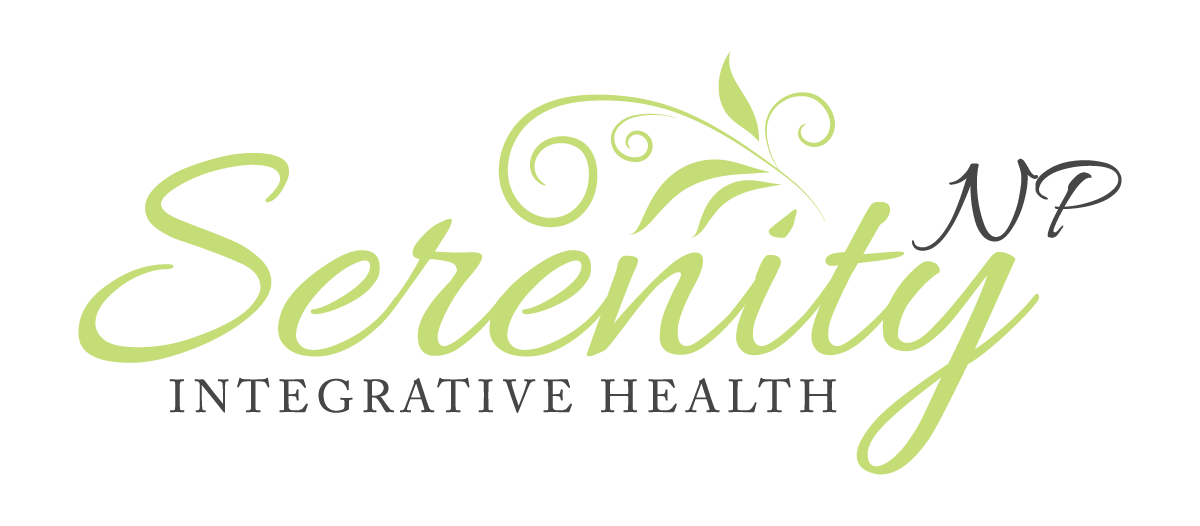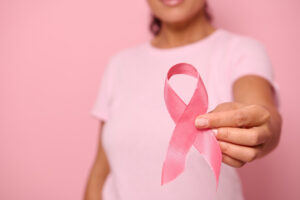Balancing your progesterone levels naturally can lower the risk of infertility, irregular periods, weight gain, and mood swings. These symptoms affect many women who struggle with hormone imbalances daily.
Your body feels the effects at the time your hormones fall out of sync, especially when you have low progesterone levels. The good news is that balancing hormones naturally doesn’t require prescriptions or costly treatments. Research reveals that women taking 750mg of vitamin C daily saw their progesterone levels jump by 77%. A hormone balancing diet proves powerful because it gives your body the nutrients it needs to boost progesterone naturally.
This piece explores ways to balance progesterone through simple dietary changes that show real results. You’ll discover specific foods, nutrients, and meal plans that boost natural progesterone production and restore your hormone balance. This food-first approach might be the solution you need if unpredictable symptoms control your life.
Understanding Progesterone Imbalance
Your body’s progesterone levels naturally change throughout the month. Persistent imbalances can substantially affect your overall health. You need to spot the signs of hormonal imbalance to balance progesterone naturally in your body.
Signs of Low Progesterone Levels
Low progesterone affects many women who don’t even realize it. Studies show that 9% of women have decreased progesterone levels [1], which shows up through several distinct symptoms. Women with irregular or heavy menstrual cycles and periods shorter than 24 days should pay attention [2]. You might also experience:
- Headaches or migraines
- Mood changes, anxiety, or depression
- Difficulty sleeping
- Hot flashes
- Breast tenderness
- Spotting between periods
Women who want to conceive might find it hard to get or stay pregnant due to low progesterone. During pregnancy, insufficient progesterone can cause spotting, abdominal pain, and frequent low blood sugar [3].
The Estrogen-Progesterone Connection
Your body’s progesterone and estrogen work together as hormonal partners [4]. Estrogen becomes dominant when progesterone levels drop too low. Health professionals call this “estrogen dominance” because progesterone usually keeps estrogen balanced.
This hormonal imbalance shows up as weight gain, heavy bleeding, irregular cycles, and strong PMS symptoms [3]. Your body might also react with gallbladder problems, reduced sex drive, and mood swings [5].
These hormone imbalances do more than cause discomfort. They raise your risk of developing uterine fibroids, endometriosis, and certain hormone-related cancers [1].
How Diet Affects Hormone Balance
What you eat shapes your hormone levels. The nutrients in your food help create reproductive hormones at every stage of life [6].
Processed foods, sugar, and unhealthy fats throw off normal hormone production. Your hormones stay balanced when you eat fresh vegetables, whole grains, and quality protein [7].
Your weight matters too. Extra body fat creates more estrogen, which can worsen estrogen dominance [5]. Being overweight disrupts the hypothalamic-pituitary-gonadal axis and creates hormone imbalances that affect reproduction [6].
Stress makes everything worse by using up progesterone to make cortisol instead [5]. That’s why you need both stress management and dietary changes to balance your progesterone naturally.
Essential Nutrients That Boost Progesterone
Your wellbeing can suffer from hormonal imbalances. Several nutrients play significant roles to balance progesterone naturally. A hormone-balancing diet with these nutrients can restore equilibrium without medication.
Vitamin B6-Rich Foods
Vitamin B6 helps regulate hormonal balance. Studies show that B6 increases progesterone levels and reduces estrogen in women’s diets. This improvement helps reduce PMS symptoms [1]. The National Institute of Health suggests women ages 19-50 should consume at least 1.3 mg daily [8].
Excellent B6 sources include:
- Salmon (1.6 mg per 6 ounces – 94% of daily needs) [8]
- Chicken breast (0.5 mg per 3 ounces) [9]
- Chickpeas (1.1 mg per cup) [9]
- Bananas (0.4 mg per medium fruit) [9]
- Potatoes (0.4 mg per cup when boiled) [9]
Magnesium Sources
The pituitary gland’s hormone production depends on magnesium to boost progesterone [2]. Women over 19 need about 310-320 mg daily [8]. Magnesium increases progesterone during your cycle’s luteal phase [7].
Nutrient-rich magnesium foods include:
- Spinach and leafy greens [2]
- Dark chocolate (64 mg per ounce) [8]
- Nuts, especially almonds (82 mg per ounce) [8]
- Avocados (58 mg per medium fruit) [8]
- Black beans (120 mg per serving) [8]
Zinc-Packed Options
Your ovaries and pituitary gland need zinc to produce Follicle Stimulating Hormone, which guides progesterone production [2]. Women over 19 should consume at least 8 mg daily [8]. Almost 20% of people worldwide have zinc deficiency [8].
Top zinc sources include:
- Oysters (32 mg per six medium – 290% of daily needs) [8]
- Lean beef [2]
- Pumpkin and squash seeds [2]
- Cashews and almonds [10]
- Whole grains [8]
Vitamin C for Hormone Production
Women who take 750 mg of vitamin C daily see their progesterone levels increase by 77% [2]. Vitamin C gets more luteal hormone production and thus encourages more progesterone. This preparation helps the endometrium ready itself for pregnancy [5].
Vitamin C-rich foods include:
L-Arginine and Protein Foods
Blood circulation to your corpus luteum and ovaries improves with L-arginine. This improvement helps them produce progesterone after ovulation [2]. High-protein foods contain this amino acid.
Excellent L-arginine sources include:
- Pumpkin seeds (5.2g per 100g) [11]
- Salmon (1.5g per 100g) [11]
- Chicken breast (1.7g per 100g) [11]
- Lentils [2]
- Turkey breast (2.5g per 100g) [11]
Power Foods for Natural Progesterone Balance
Natural progesterone balance depends on specific food categories. These foods work together to support your body’s hormone production systems.
Cruciferous Vegetables
Your liver metabolizes estrogen better with the help of compounds found in cruciferous vegetables [12]. This family has broccoli, cauliflower, Brussels sprouts, kale, and cabbage [6]. You’ll find diindolylmethane (DIM) and indole-3-carbinol (I3C) in these vegetables that support estrogen detox in your liver and digestive system [6]. Women who eat plenty of cruciferous vegetables report fewer hormone-related issues [12].
You should aim to eat two to three servings of cruciferous vegetables daily. But remember to cook these vegetables well if you have an underactive thyroid since raw goitrogens can affect thyroid function [12].
Healthy Fats and Omega-3s
Your body needs omega-3 fatty acids to make hormones [13]. These nutrients help curb inflammation that leads to hormone imbalances. To name just one example, omega-3s can lower prostaglandins and reduce menstrual cramps and pain [13].
Excellent sources include:
- Fatty fish (salmon, mackerel, sardines)
- Flaxseeds and chia seeds
- Walnuts and algal oil
Research shows omega-3s can reduce menopausal symptoms like depression and hot flashes [13]. A healthy omega-6 to omega-3 ratio of 2:1 prevents excess inflammation that disrupts hormonal balance [13].
Whole Grains and Fiber
Your body gets rid of extra estrogen better with fiber-rich whole grains [14]. Quinoa, oats, and brown rice contain complex carbohydrates that digest slowly. This helps maintain stable blood sugar and balanced insulin response [15].
Seeds and Nuts
Your hormone production needs essential fats and minerals from seeds and nuts. Flaxseeds have lignans that help control estrogen levels [16]. Pumpkin seeds provide zinc, which is vital for progesterone production [16].
Some health experts suggest “seed cycling” – eating different seeds during specific menstrual cycle phases to support hormone balance [3]. While research remains limited, many women see improvements in their symptoms when they keep taking these nutrient-rich foods [17].
Creating Your Hormone Balancing Diet Plan
Your body needs a well-laid-out approach to daily meals that will boost progesterone levels. A balanced hormone diet supports your body’s natural progesterone production and reduces harmful substances.
Daily Meal Structure
Creating balanced plates for each meal naturally helps balance progesterone. Your plate should contain protein, healthy fats, complex carbohydrates, and plenty of vegetables [18]. The ideal plate has 50% non-starchy vegetables, 25% protein, and 25% complex carbohydrates, plus a serving of healthy fats [19].
Blood sugar stability plays a vital role in hormonal balance [20]. Eating meals at regular intervals helps maintain steady insulin levels. Focus on nutrient-rich whole foods to manage hormonal symptoms instead of specific diets like keto or paleo [21].
Sample 7-Day Progesterone-Boosting Menu
Breakfast options:
- Spinach omelet with avocado and whole-grain toast
- B6-rich smoothie with banana, flaxseeds, and fortified almond milk
- Oatmeal topped with walnuts, sunflower seeds, and berries [1]
Lunch ideas:
- Leafy green salad with grilled salmon, avocado, and pumpkin seeds
- Quinoa bowl with chickpeas, bell peppers, and tahini dressing
- Mixed bean soup with side of cruciferous vegetables [1]
Dinner suggestions:
- Grilled chicken with steamed broccoli and sweet potatoes
- Quinoa-stuffed bell peppers with ground turkey and vegetables
- Salmon with asparagus and brown rice [1]
Healthy snacks:
- Handful of mixed nuts (almonds, walnuts)
- Yogurt with berries and a drizzle of honey
- Dark chocolate or fruit salad for vitamin C [1]
Foods to Avoid
Some foods can throw your hormones off balance:
Caffeine lowers melatonin and increases cortisol production [21]. Alcohol disrupts your body’s hormonal balance from thyroid to sex hormones [21]. Processed foods and additives prevent proper hormone balance [21]. Fried foods and saturated fats increase inflammation and hormonal problems [21]. High-glycemic index carbs spike blood sugar and disrupt hormone levels [21]. Non-organic dairy might contain synthetic hormones that harm your hormonal health [22].
A diet rich in progesterone-supporting foods and free from hormone disruptors helps restore your body’s natural hormonal balance.
Conclusion
Natural progesterone balance depends on dietary choices that support your endocrine system. This piece explores how nutrients like vitamin B6, magnesium, zinc, and vitamin C act as essential components for hormone production. A powerful nutritional foundation for hormonal balance comes from cruciferous vegetables, omega-3 rich foods, and fiber-dense whole grains.
Your body’s hormone balance takes time to achieve. These nutritional changes need consistent support to provide the raw materials for progesterone production. A fundamental change in lifestyle works better than quick fixes, and patience brings the best outcomes.
On top of that, these dietary guidelines show better results when paired with stress management and good sleep. Your body prioritizes cortisol production over progesterone when stress levels rise. Activities like meditation, gentle movement, and proper sleep habits support your nutritional efforts.
The path to hormonal balance starts with small, environmentally responsible changes. Add one or two progesterone-supporting foods to your daily meals and build from there. Your hormonal health needs the same care as your overall wellbeing. These dietary strategies can improve your hormone-related symptoms and boost your energy, mood, and quality of life.
References
[1] – https://www.rupahealth.com/post/progesterone-foods
[2] – https://www.mariongluckclinic.com/blog/six-nutrients-boost-progesterone.html
[3] – https://www.healthline.com/nutrition/seed-cycling
[4] – https://my.clevelandclinic.org/health/body/24562-progesterone
[5] – https://pmc.ncbi.nlm.nih.gov/articles/PMC10574174/
[6] – https://www.healthshots.com/healthy-eating/nutrition/cruciferous-vegetables-nutritious-foods-you-need-to-balance-hormones/
[7] – https://drcatherine.com/blogs/womens-wellness/ease-pms-symptoms-with-magnesium-rich-foods
[8] – https://www.letsgetchecked.com/articles/naturally-increase-low-progesterone-levels/?srsltid=AfmBOopsTPJVlz_wQjtqizhVk7v6NJszcwcAGb4A8WQ6hti3THcm3b1i
[9] – https://ods.od.nih.gov/factsheets/VitaminB6-HealthProfessional/
[10] – https://thedietologist.com.au/foods-to-boost-your-progesterone-levels/
[11] – https://www.tuasaude.com/en/foods-high-in-arginine/
[12] – https://holplus.co/why-holistic-medicine-doctors-want-women-to-eat-more-cruciferous-vegetables/
[13] – https://drbrighten.com/25-health-benefits-of-omega-3-fatty-acids/
[14] – https://www.parents.com/getting-pregnant/pre-pregnancy-health/general/5-ways-to-naturally-increase-progesterone/
[15] – https://bywinona.com/journal/foods-for-hormone-balance?srsltid=AfmBOopXA2KVCnmHhqQuftll4uE-sEQbgcN6SDk1PNQWqznjFrn9kRvM
[16] – https://www.temeculamedicalgroup.com/blog/8-foods-to-balance-hormones
[17] – https://mcpress.mayoclinic.org/women-health/seeds-are-healthy-but-do-they-impact-hormones/
[18] – https://www.verywellfit.com/hormone-balancing-meal-plan-8304151
[19] – https://www.thegoodlifedietitian.com/blog/build-balanced-meals-for-balanced-hormones
[20] – https://www.plateandcanvas.com/a-hormone-balancing-diet-everything-you-need-to-know
[21] – https://www.singlecare.com/blog/hormone-balancing-diet/
[22] – https://bioidhealth.com/foods-that-affect-hormones/





